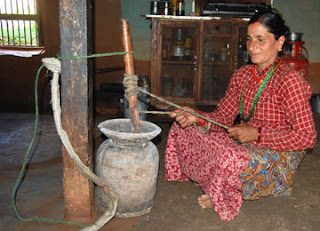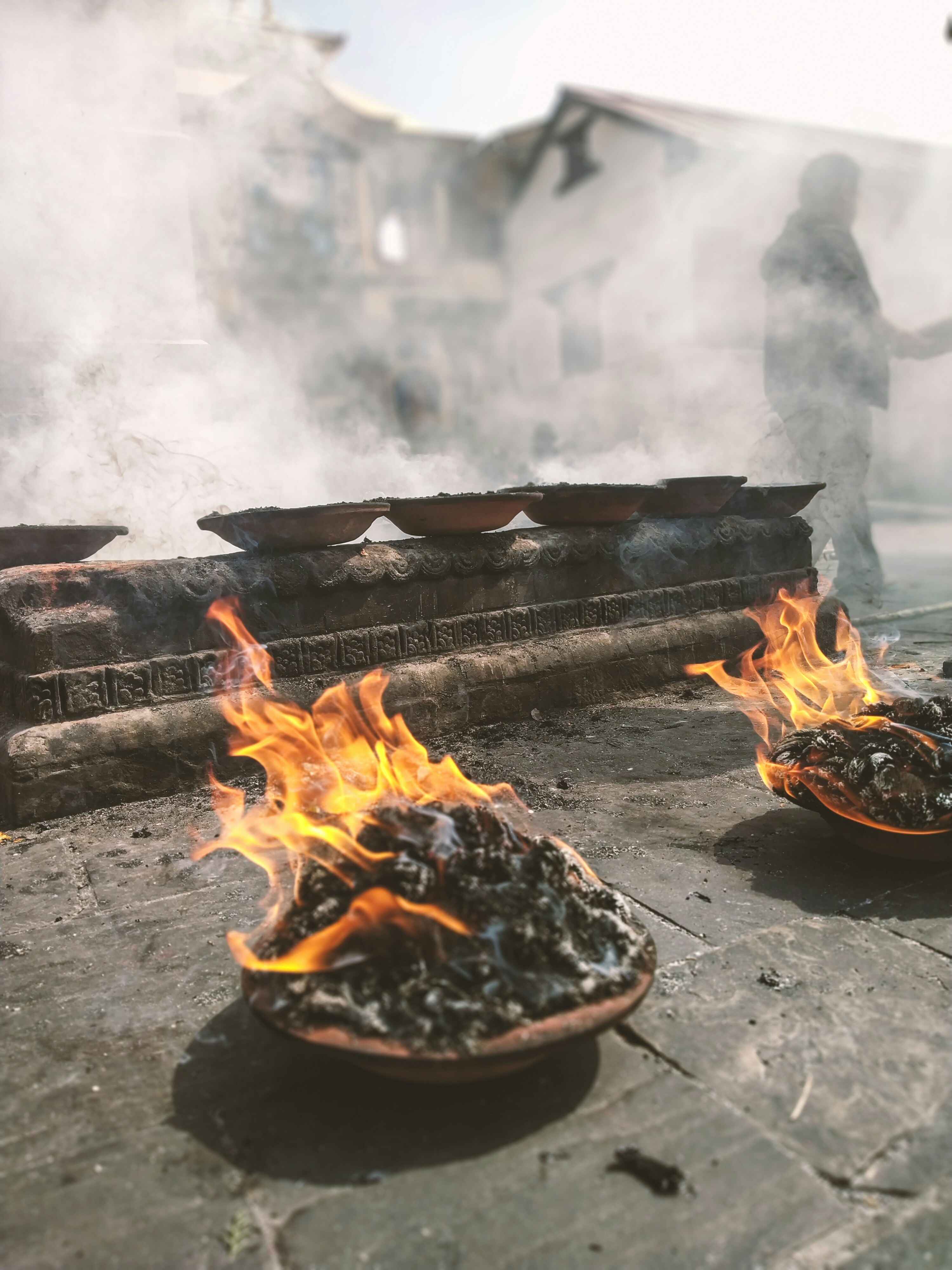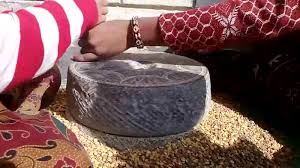Share this Article

In the serene hills and villages of Nepal, where traditions are deeply woven into daily life, the Madani stands as a symbol of time-honored wisdom and sustainable living. This ancient tool, primarily used to churn curd into butter or ghee, reflects the ingenuity and resourcefulness of Nepalese households, especially in rural and mountainous regions.
What is a Madani?
The Madani is a traditional wooden churner used to process dairy products—primarily curd (dahi)—into butter (makkhan) and ghee (clarified butter). It consists of a cylindrical wooden container (often made from local hardwood) and a round, flower-like wooden mixer attached to a long handle. The container typically stands upright, allowing the user to move the mixer in a repetitive twisting motion, either manually or with the help of a rope mechanism.
This churning motion, known locally as "madne" or "ghyugne", separates butterfat from the yogurt, eventually allowing for the collection of butter, which is later heated to produce pure ghee.
The Process
- Fermenting the Milk: Whole milk is left overnight to ferment into yogurt.
- Filling the Madani: The curd is poured into the wooden cylinder.
- Churning: The wooden mixer is inserted and twisted back and forth, often with a rope tied to both ends to aid the continuous motion.
- Butter Separation: After 20–30 minutes, butter begins to form and float on top of the liquid.
- Collection and Heating: The butter is collected and boiled slowly to make golden, aromatic ghee.
The remaining liquid, known as mahi (buttermilk), is often used in cooking or as livestock feed.
Cultural Significance
Beyond its utility, the Madani holds cultural and symbolic importance. In many communities, ghee made with a Madani is preferred for rituals, religious offerings, and traditional feasts. The act of churning itself is considered a meditative, almost sacred task—often performed during early morning hours when the village is still and quiet.
Sustainability and Simplicity
Unlike modern electric blenders or mixers, the Madani requires no electricity and lasts for generations. It embodies a zero-waste, eco-friendly approach, relying solely on human effort and locally available materials. The wood used for both the cylinder and mixer is typically sourced sustainably and treated to withstand moisture.
Conclusion
While modernization has introduced faster methods of dairy processing, the Madani remains a cherished symbol of Nepali heritage. For those seeking authenticity in taste and tradition, using a Madani is more than a process—it's a return to roots, a celebration of craftsmanship, and a tribute to generations who perfected the art of making ghee and curd long before machines existed.
Categories:
Traditional Tools and Utensils
Tags:
Madani
,
GheeMaking
,
CurdToGhee
,
HomemadeGhee







